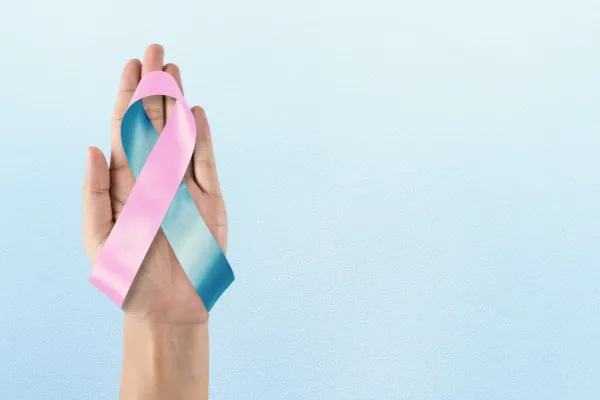Topics
Breastfeeding is the natural and recommended method of feeding infants, ideally starting shortly after birth. Breast milk provides essential nutrients, antibodies, and other beneficial components that support a baby's growth and development.
The advantages of breastfeeding extend beyond mere nutrition. Children who are breastfed exhibit enhanced performance on intelligence tests, a reduced likelihood of being overweight or obese, and a lower susceptibility to diabetes later in life.
Moreover, women who engage in breastfeeding experience a diminished risk of breast and ovarian cancers.
The World Health Organisation (WHO) advocates that babies should breastfeed within the first hour of birth and continue to be purely breastfed for the first 6 months of life.
Learn more about the benefits of breastfeeding for babies and mothers.
Breastfeeding is often mistakenly perceived as effortless. In reality, both mothers and babies require time and practice to master breastfeeding. Numerous mothers encounter difficulties in the process, yet these challenges can be overcome with proper support.
What Are the Common Breastfeeding Challenges, and What Can Be Done?
Remember, you are not alone if you find breastfeeding difficult. Here are some common breastfeeding challenges/difficulties and their recommended solutions.
Improper latch during feeding can cause sore or cracked nipples, leading to discomfort and even pain for the mother. However, do not stop breastfeeding; seek help from a midwife or your doctor.
Recommended solutions for sore or cracked nipples:
- Wear a breathable cotton bra to provide air circulation.
- Continue nursing your baby for as long as they desire. Restricting breastfeeding durations to give your nipples a break will not alleviate nipple pain and may affect your milk supply.
- If you notice your nipples cracking, consider applying a small amount of expressed breast milk onto them after each feeding.
Breast engorgement occurs when your breasts become overly filled with milk, causing them to feel firm, tight, and painful. This situation may arise in the initial days of breastfeeding as you and your baby adjust to the process, and it may take some time for your milk supply to synchronise with your baby's demands.
Additionally, engorgement can occur later when your baby is older and not breastfeeding as frequently, such as when they begin to consume solid foods.
Recommended solutions for engorged breasts:
- To alleviate the discomfort of engorgement, in addition to regular breastfeeding, you can attempt to express a small amount of breast milk by hand. It is essential to express only enough to ease the discomfort, as expressing more may stimulate increased milk production. Consult with your midwife or doctor to demonstrate the proper hand expression technique.
- Over-the-counter pain relievers such as paracetamol can help with the pain but do take them as directed by a doctor.
Milk ducts can become blocked when breast engorgement persists. You may feel a tender lump form in the breast.
Recommended solutions for blocked milk ducts:
- Avoid tight clothes or bras.
- Frequently feed from the affected breast.
- Use warm flannels or take a warm er to encourage milk flow.
- Gently massage the lump towards your nipple while your baby feeds.
- It is crucial to address a blocked duct promptly as if left untreated, it could potentially progress to mastitis.
When a blocked milk duck is left untreated and does not clear, it can result in mastitis.
Symptoms of mastitis include breast that feels hot, sore, and painful, fever, and painful red patch on the skin.
Recommended solutions for mastitis:
- Continue breastfeeding.
- Ensure proper positioning and attachment of your baby during feeds.
- Prioritise feeding from the tender breast first. If the affected breast still feels full after a feed or your baby cannot feed for some reason, express your milk by hand.
- Use warm flannels or take a warm er to encourage milk flow.
- Prioritise rest and consider going to bed when possible.
- To relieve pain, you may take paracetamol or ibuprofen as recommended.
When you first start breastfeeding, it is common to be concerned that your baby might not be receiving sufficient milk. It takes some time before you gain confidence in recognising that your baby is getting the required nourishment.
Several factors can contribute to low milk supply, including:
- Delay in initiating breastfeeding
- Minimal skin-to-skin contact
- Delay in milk production due to delivery complications, illness, or diabetes
- Poor attachment during breastfeeding
- Fixed feeding times
- Short breastfeeding sessions
- Lack of nighttime feeding
- Infrequent breastfeeding sessions
- Worry and stress
- Lack of confidence in breastfeeding
- Lack of bonding
- Dislike breastfeeding
- Fatigue
Recommended solutions for insufficient breast milk:
- Engage in early skin-to-skin contact with your baby.
- Feed your baby more frequently. Feeding on demand usually results in greater milk production by the body.
- Offer both breasts to the baby for them to be emptied during feeding.
- Breastfeed exclusively unless supplementing your milk supply is medically necessary.
- Proper sleep and eating nutritious food will also help with breast milk production.
If you are a first-time mom, you will quickly realise that you and your baby will learn to navigate breastfeeding together. It may require a period of adjustment, and thus, it is essential not to give up too soon.
Recommended solutions if baby is not latching properly:
- Hold your baby close and align their nose with your nipple.
- Gently tilt your baby's head back so their upper lip can lightly touch your nipple, encouraging them to open their mouth widely.
- As your baby opens their mouth wide, their chin should make contact with your breast first, and their head should be tilted back to enable their tongue to access more of the breast.
- With your baby's chin securely against your breast and their nose unobstructed, you should observe a wide-open mouth.
- You should see more of the darker nipple skin above their upper lip than below their lower lip, and their cheeks should appear full and rounded during feeding.
- If breastfeeding continues to be a struggle, speak to your doctor.
Thrush infections may occur when your nipples are cracked or damaged. This indicates that the candida fungus responsible for thrush can potentially infiltrate your nipple or breast.
Indications of a thrush infection in your breasts may include:
- Onset of pain in both nipples or breasts following feeds, especially if you previously experienced no pain after breastfeeding.
- The pain can vary from mild soreness to severe discomfort, persisting for up to an hour after each feed.
Symptoms of oral thrush in breastfed babies include:
- Creamy white spots or patches on the gums, tongue, roof of the mouth, or insides of the cheeks. These patches will not come off if wiped gently with a clean cloth.
- Unsettled behaviour during feeding.
- A white film on the lips.
- Persistent nappy rash in some babies that does not clear up.
Recommended solutions for thrush:
- You can continue breastfeeding while both you and your baby are undergoing treatment for thrush.
- For oral thrush in babies, treatment typically involves an antifungal gel or liquid, which is safe for your baby. It is essential to wash your hands carefully after administering the treatment.
- Breastfeeding women with thrush are usually treated with a cream applied sparingly on and around the nipples after feeds. Thorough handwashing is necessary after self-treatment. In some cases, women may need antifungal tablets to clear the infection.
- After initiating treatment, you should experience improvement in symptoms within 2 to 3 days, although complete clearance of the infection may take a bit longer.
- Speak to your doctor if you are unsure about the treatment options for thrush.
In certain babies, the strip of skin connecting the tongue to the floor of the mouth, known as the frenulum, is shorter than usual. This condition is referred to as tongue tie.
While some babies with a tongue tie may not exhibit any distress, others may face difficulties in breastfeeding due to restricted tongue movement.
However, tongue tie is treatable.
Recommended solutions for tongue tie:
- If your baby has a tongue tie but is feeding normally without issues, immediate treatment may not be needed.
- However, if feeding is impaired, a simple procedure can be done to correct the problem.
- Speak to your doctor to know more about the treatment options.
What Are the Breastfeeding Concerns for Human Immunodeficiency Virus (HIV)-Positive Mothers?
For mothers who are on antiretroviral therapy (ART) and maintain a sustained undetectable HIV viral load during pregnancy, the risk of transmission through breastfeeding is significantly reduced, often to less than 1%. However, it is crucial to emphasise that the risk is not zero.
Replacement feeding with properly prepared formula eliminates the risk of postnatal HIV transmission to the infant. If mothers choose to breastfeed, it is important to adhere to ART and maintain sustained viral suppression. This is crucial to minimise the risk of HIV transmission during the postpartum period.
Make an Appointment at Pantai Hospitals
Breast milk has numerous benefits for the growth and development of a newborn. Additionally, being close to each other during breastfeeding helps the mother and child bond. New mothers should breastfeed for at least the first 6 months and, if possible, up to 2 years.
If you encounter difficulties and need help with breastfeeding, get in touch with us to book an appointment today with a Paediatrician at your nearest Pantai Hospital.
Pantai Hospitals have been accredited by the Malaysian Society for Quality in Health (MSQH) for its commitment to patient safety and service quality.












